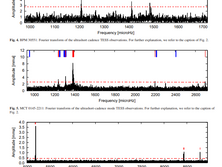Claire Lamman ,
1★ Daniel Eisenstein,1
Jaime E. Forero-Romero ,
2,3
Jessica Nicole Aguilar,4
Steven Ahlen ,
5 Stephen Bailey ,
4 Davide Bianchi ,
6 David Brooks,7 Todd Claybaugh,4
Axel de la Macorra ,
8 Peter Doel,7 Simone Ferraro ,
4,9 Andreu Font-Ribera ,
7,10 Enrique Gaztañaga,11,12,13 Satya Gontcho A Gontcho ,
4 Gaston Gutierrez,14 Klaus Honscheid,15,16,17
Cullan Howlett ,
18 Anthony Kremin ,
4 Andrew Lambert,4 Martin Landriau ,
4 Laurent Le Guillou ,
19
Michael E. Levi ,
4 Aaron Meisner ,
20 Ramon Miquel,21,10 John Moustakas ,
22 Jeffrey A. Newman ,
23
Gustavo Niz ,
24,25 Francisco Prada ,
26 Ignasi Pérez-Ràfols ,
27 Ashley J. Ross ,
15,28,17
Graziano Rossi,29 Eusebio Sanchez ,
30 Michael Schubnell,31,32 David Sprayberry,20 Gregory Tarlé ,
32
Mariana Vargas-Magaña ,
8 Benjamin Alan Weaver,20 Hu Zou 33
































